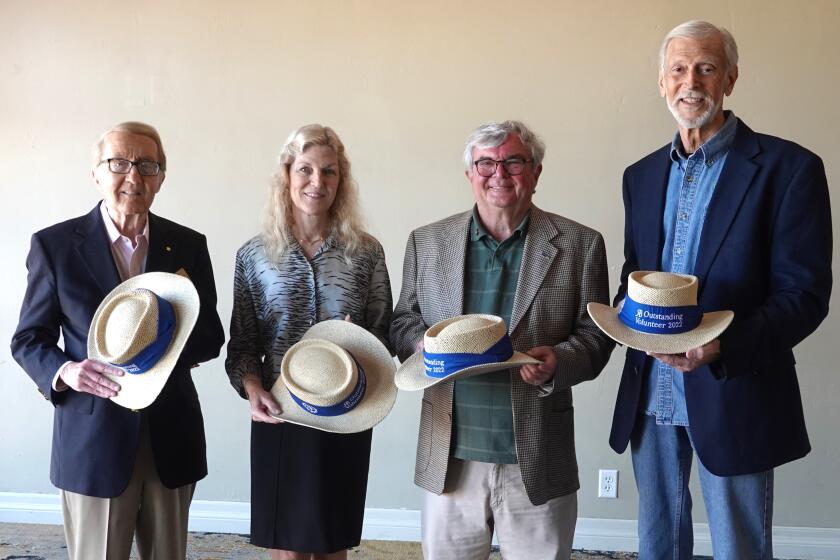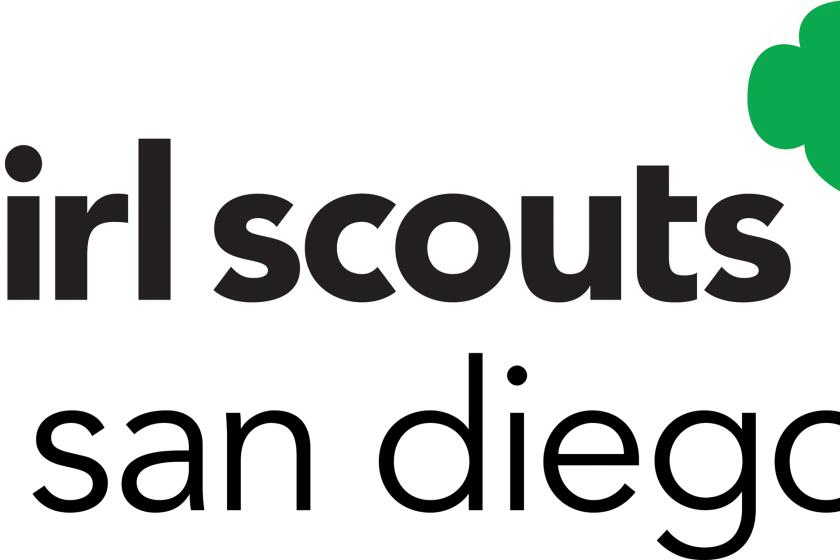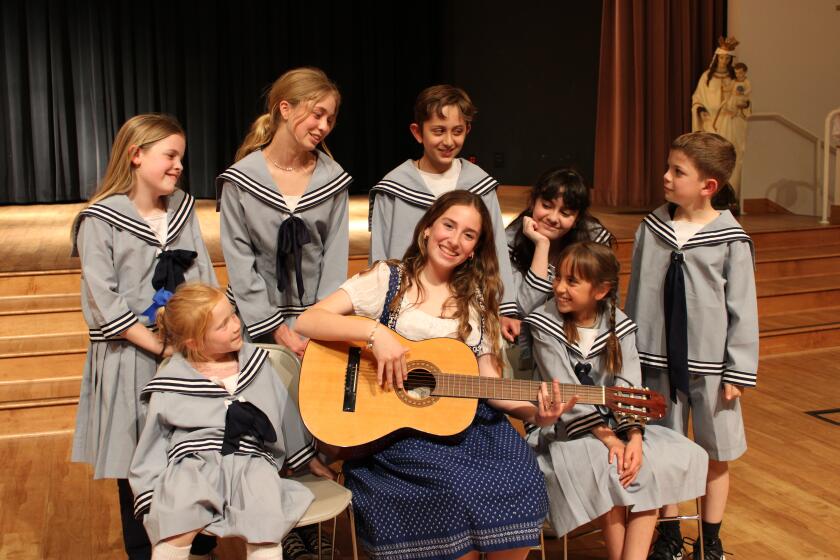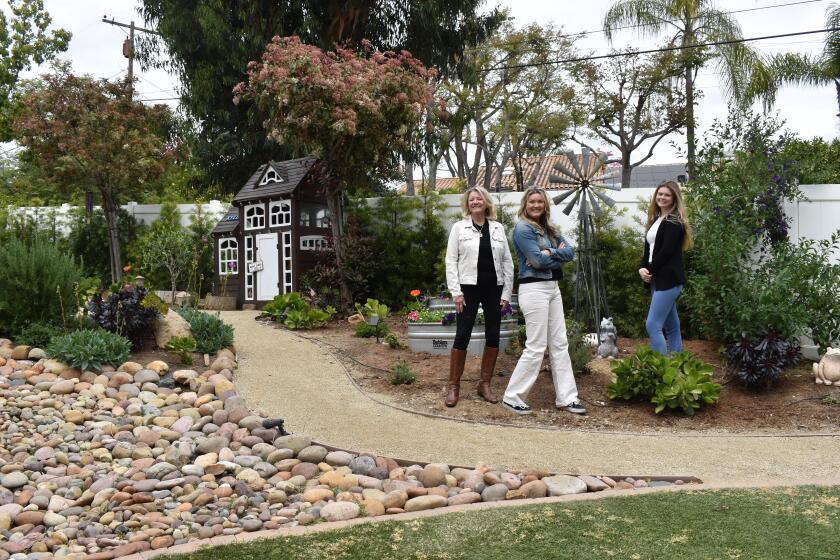Public’s help needed to maintain progress in San Dieguito River Park restoration effort
San Dieguito River Park staff have been working on restoring trails and natural habitats in the Rancho Bernardo area. But the public’s help is needed for their efforts to be successful and for a “very shy” little bird to survive.
SDRP Resources and Trails Manager Jason Lopez said the Bernardo Bay Natural Area Trail Management Project is about halfway done. It includes the Piedras Pintadas and Bernardo Bay trails, West Bernardo Bicycle Path, David Kreitzer Lake Hodges Bicycle/Pedestrian Bridge and other park areas on the south side of Lake Hodges. Combined, it is an open space of roughly 350 acres and home to some endangered or threatened species, including the coastal cactus wren, which he called “very shy,” and the California gnatcatcher.
According to recent studies, Lopez said the California gnatcatcher population appears to be low but stable, with 12 pairs detected in 2014. The coastal cactus wren’s fate is less optimistic since only three pairs were observed, confined to Bernardo Mountain. They require mature cactus patches to survive predators like the greater roadrunner and Coopers hawk. However, the cactus planted in 2008 to restore areas destroyed during the 2007 Witch Creek fire will not be tall enough to provide the wrens with a nesting habitat for another two to four years and only one nest was found with young.
“Cactus wren populations are fragile and the bird does not seem to like to travel very far,” Lopez wrote in a recent report. “It is likely that the Bernardo Mountain population may be confined to Lake Hodges. The fate of this song bird, which has lived in the vicinity of what is now Lake Hodges for thousands of years, is up to three remaining pair of cactus wren.”
The restoration project that launched last November has included planting 1,000 cacti on Bernardo Mountain plus coastal sage scrub plants in the Bernardo Bay area. The endeavors are funded through various grants.
“Overall, the restoration projects will help most animals that require coastal sage scrub habitat, including the resident song birds, but cactus grows slow and the clock is ticking for the coastal cactus wren of Bernardo Mountain,” he wrote.
The 2007 fire burned much of the area and efforts were made in 2008 and 2009 to restore what was lost. However, when the multi-agency funded river park received no City of San Diego funding from 2009 to 2012, Lopez said restoration efforts that included putting up new fences stopped because staff had to be pulled away from caring for the area within city limits.
“We had to walk away due to a funding issue,” he said.
With no rangers available to restore the open space and remove non-native, invasive plants, nor patrol the area for trail users going off the designated paths, which creates further damage and destruction, Lopez said “the whole area went south.”
City funding was restored for 2013 and 2014, though if it will continue in 2015 is uncertain, he said. Without knowing if there will be money for rangers to continue patrolling the area — plus work halting for nesting season, which is March 15 through Sept. 15 — the project is headed into a monitoring phase again.
In the meantime, Lopez said the public can help make sure the efforts undertaken in the last few months are effective, even if rangers end up less frequently patrolling the area. Park visitors can do this by following the signs and not straying from designated trails, plus telling other visitors they see off the trails that they are in sensitive areas and need to get back on the correct path.
“This is the most effective ... they have a sense of ownership,” he said, adding people also need to stay out of the park when it is dark. The park opens at 6 a.m. each day and closes at 6 p.m. from Oct. 1 to March 31 and 7:30 p.m. from April 1 to Sept. 30. The bridge is open from 6 a.m. to 9 p.m. all year.
The current restoration project included putting up signage throughout the area to direct people toward various trails and tell them to stay out of certain areas that rangers have recently planted so the young vegetation is not destroyed. The signs include QR codes so trail users can get additional information, if they desire.
Signs were also installed telling people to use a buddy system for their safety, plus there are trail directional signs, so if trail visitors get in distress and have to call for help, San Diego Fire-Rescue personnel have a faster way to find them out in the open area, he said. The signs also indicate trail distances, so visitors can choose routes best suited for them.
Lopez said some new fencing has been installed to keep people from going on trails created by park visitors who did not stay on the original paths. He said vegetation has not only been destroyed by their walking and bicycling in non-designated areas, but the shortcuts also lead to erosion since they create fall line trails, which act like a drain and deprive native plants of water, which is already in short supply due to the multi-year drought.
In areas where fencing has not gone up, Lopez said signs have been placed. If rangers see the signs are not discouraging people from taking the shortcuts then they will likely have to install more fences if funding permits.
He said the county, through Supervisor Dave Roberts’ office, provided a $5,000 grant for the signage and an additional $2,300 was obtain through other means, such as money paid when events are held at Lake Hodges. He said 246 staff hours have been spent on the project since November, plus volunteers contributed another 48 hours of work.
There is more work to be done and volunteers can potentially help with some of it. For details, contact Leana Bulay at leana@sdrp.org or 858-674-2275 ext. 14.





